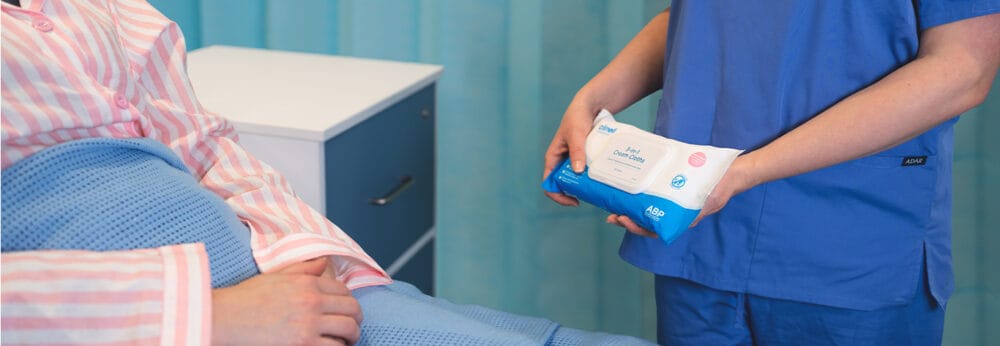Posted
2nd September 2019
Research
Catheter-associated urinary tract infections (CAUTI) are one of the most common infections acquired in healthcare. A new RCT published in the Lancet Infectious Diseases shows that meatal antisepsis using 0.1% chlorhexidine prior to catheter insertion reduced the CAUTI rate by 94%.
A number of different steps can be taken to reduce the risk of urinary catheter-associated UTI, including interventions related to catheterisation techniques, meatal care, catheter size and composition, bladder irrigation, drainage systems, care delivery practices, and education programs. One approach to reducing CAUTI is meatal cleansing using antiseptics such as 0.1% chlorhexidine. A fairly recent review article concluded that the evidence at the time that this review was completed suggested that meatal antisepsis did not prevent CAUTI, although the authors stressed that poor study designs, a lack of sufficient numbers of patients in the studies to demonstrate statistical significance, and other methodological issues made these conclusions uncertain. These findings prompted the same research group (led by Prof Brett Mitchell in Australia) to perform a carefully controlled randomised controlled trial to examine the impact of meatal antisepsis using chlorhexidine.
The resulting multi-centre RCT compared the effect of 0.1% chlorhexidine solution and 0.9% saline for meatal antisepsis prior to catheterisation in reducing both catheter-associated asymptomatic bacteriuria and CAUTI. 1,642 patients in 3 hospitals were included in the study, finding that meatal antisepsis using 0.1% chlorhexidine was associated with a 74% reduction in the incidence of catheter-associated asymptomatic bacteriuria (incident rate ratio 0·26, 95% CI 0·08–0·86, p=0·026), and a 94% reduction in the incidence of catheter-associated UTI (0·06, 95% CI 0·01–0·32, p<0.001). Importantly, no adverse events were reported. This study suggests that meatal antisepsis using chlorhexidine is an effective intervention to not only prevent urinary catheter-associated UTI but also asymptomatic bacteriuria. This is important, as antimicrobials can often be prescribed on the basis of a microbiology report and approximately 25% of patients with asymptomatic bacteriuria and an indwelling catheter may go on to develop CAUTI.
These findings support the use of 0.1% for meatal antisepsis prior to urinary catheter insertion as an effective intervention to prevent CAUTI.
SHARE THIS ARTICLE
Tags
Latest News
Advancing Continence Care with Clinell Contiplan: Expanded Indications, Pathways and Proven Outcomes
This World Continence Week, Clinell Contiplan 3-in-1 Cream Cloths introduce…
Celebrating 20 Years of GAMA Healthcare: Our Story
This month, GAMA Healthcare celebrates 20 years of helping prevent…
Norovirus and gastroenteritis outbreaks, the party ‘pooper’ you don’t want invited!
Recently, on 11 October 2024, NSW Health issued a health…
Clean Between to Reduce Healthcare-Associated Infections
Healthcare-associated infections (HAIs) are a significant concern for healthcare facilities…



